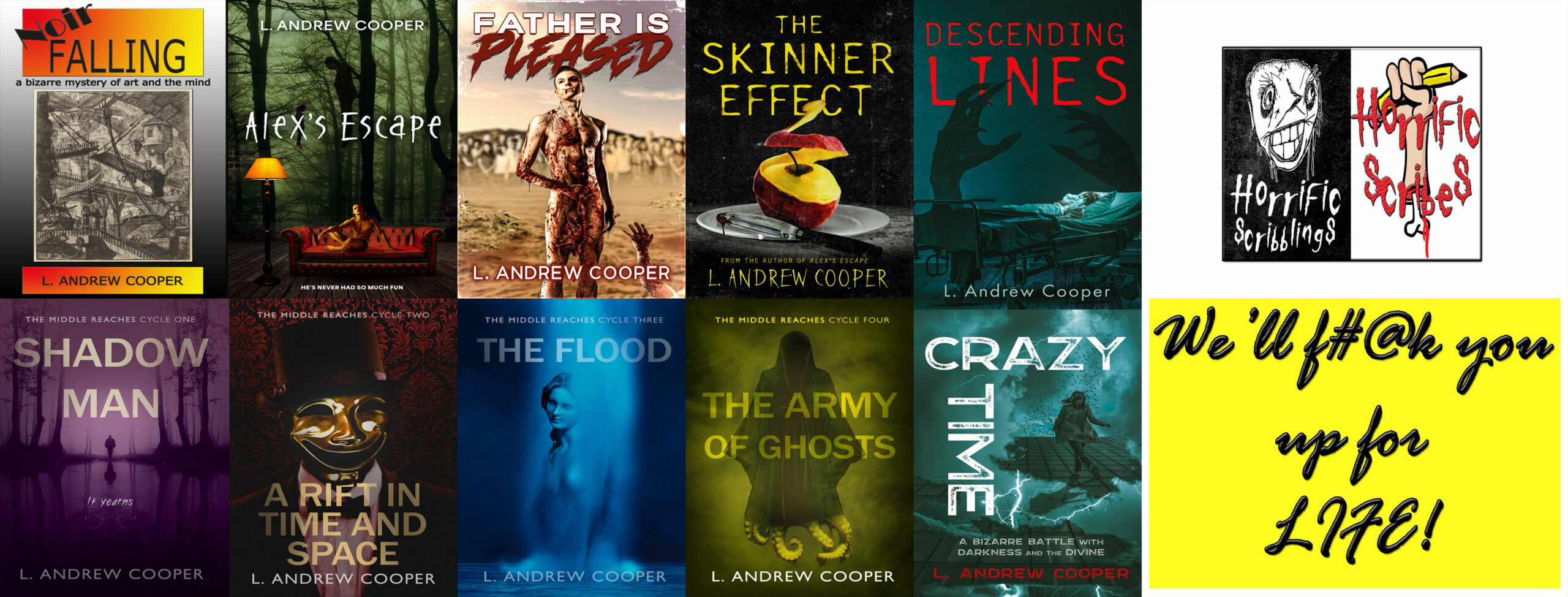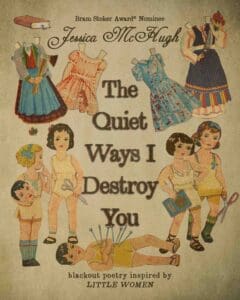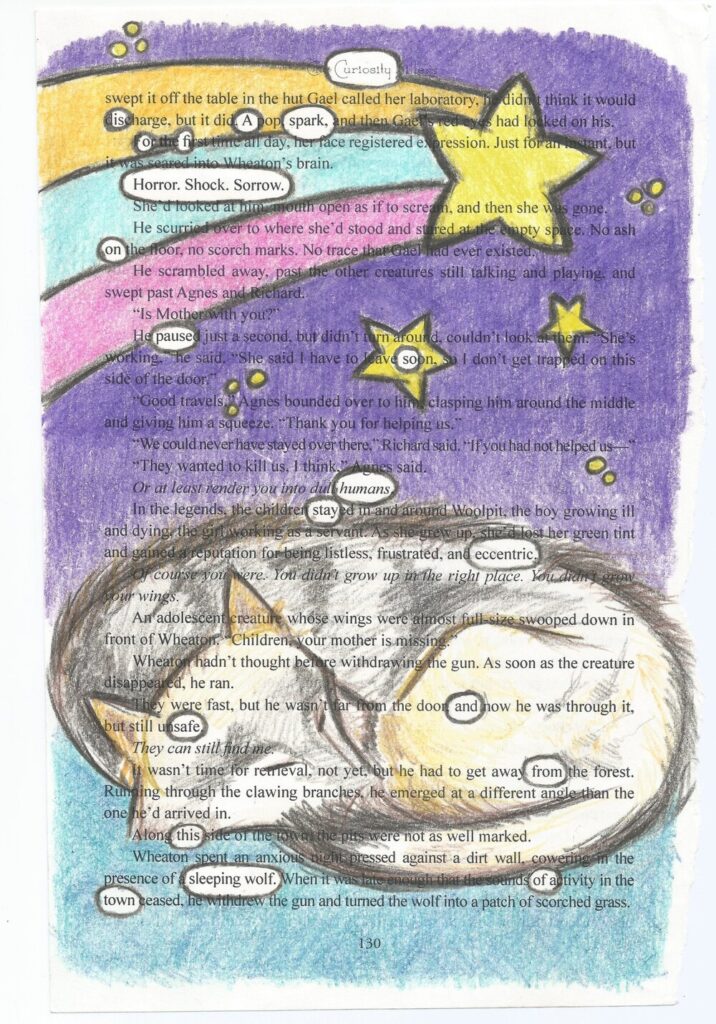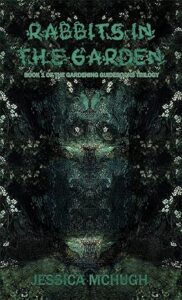Interview with Author Jessica McHugh: The Quiet Ways I Destroy You and Hares in the Hedgerow (2023)
Many thanks to renowned novelist, poet, and playwright Jessica McHugh for joining me to discuss her newest poetry collection The Quiet Ways I Destroy You and her 1970s cult horror novel Hares in the Hedgerow!
The Quiet Ways I Destroy You
Women are expected to suffer in silence. Throughout history, myriad weapons of oppression have been launched at their intelligence, sexuality, compassion, & strength. Still, they endure.
And in secret, the sisterhood grows.
While trauma transforms, love germinates, and hope expands their power, women everywhere are united by something deeper than blood, affection, or pain. Quiet as mycorrhizal fungi, immortal ink colonizes their roots, branching from the iconic characters of Meg, Jo, Beth, Amy, & Marmee March and connecting them to a diverse web of women with appetites only destruction can quell.
Paying homage to the 155th anniversary of Louisa May Alcott’s Little Women, this collection examines Alcott’s timeless literary brood through 155 pieces of cosmic horror blackout poetry and celebrates the unapologetic & ever-evolving symbiosis of sisterhood, feminine rage, and the joyful vengeance that spreads in women’s whispers.
Hares in the Hedgerow
An aspiring singer/songwriter, Sophie Francis is searching for inspiration, pining for connection, and desperate to know why she feels so different from everyone else. Maybe it’s the ghosts whispering in the apartment above her, or the chilling thoughts writhing in her mind when the ghosts are quiet. Maybe she’s a reincarnated saint abducted as an infant and raised by a former serial killer.
Or maybe she’s just sixteen.
Upon meeting an intoxicating musician named Liam LaSalle and an enigmatic community of misfits known as the Choir of the Lamb, Sophie scampers down a rabbit hole of music, martyrs, and madness. There, she discovers her link to a dangerous legacy and a fiery little girl named Avery Norton.
Hares in the Hedgerow leads Sophie Francis on a disturbing and transformative journey to expose and harness the darkness in the roots of her family tree.
The Interview
(1) Blackout Speaks Out. How do you make “blackout poetry,” and what draws you to it? To create “cosmic horror blackout poetry,” are you using pre-existing cosmic horror texts, creating your own cosmic horror texts, reflecting on cosmic horror texts—or some combination? In form and content, how do you fuse blackout poetry with cosmic horror? Do you make the unspeakable speak?
JM: Blackout poetry is the art of finding a poem hidden within an existing page of prose (or poetry, magazines, vcr repair guides, etc) and using visual art to “black out” the superfluous words, allowing the poem to stand out. It doesn’t matter too much what the original genre is; you can make a horror poem out of pretty much anything, I’ve discovered. Obviously works with more evocative, spooky words will lend better to cosmic horror pieces, but you can also build words from the letters on the page, or find the words hidden within words to change the mood, as well as the tense and POV. Using these techniques combined with horror metaphors allows you to give a voice to all sorts of surprising characters and emotions.
(2) Women with Inky Roots. Why are Little Women and “Alcott’s timeless brood” so important?
JM: At face value, Little Women is a feminist tale with the March family at the helm, leading all sorts of important conversations about womanhood. Jo is the most obvious character going against the grain, so to speak, but in creating The Quiet Ways I Destroy You and living within all the female characters in that book, I realized how many of them challenge stereotypical femininity, especially for the time. Though I identified with Jo most as a child, I realized that the March women and the other female characters represent the many facets of femininity existing inside most women. I saw myself in them all, their struggles and triumphs mirroring my own, and I firmly believe one of the most important things for someone’s mental health is recognizing that you’re not alone. In all situations, someone has been there before, many are probably still there, and finding each other–your people, your brood–so you don’t feel alone is a lifesaving endeavor. Just like the characters of Little Women, we become survivors when surrounded by family.
(3) Women Destroy. Women everywhere with appetites only destruction can quell… what is your vision of the destruction necessary to quell these appetites? How do women answer attacks from weapons of oppression launched since history’s beginning?
JM: Destroying weapons of oppression comes in many forms. Whether it’s gathering like we did for the historical Women’s March of 2016, escorting vulnerable women into clinics for life-saving healthcare when hate groups threaten their safety, speaking out when we witness harassment and casual misogyny, or creating art that shows the power of our collective voice, we must show we’re not intimidated by small people with loud voices. We must be louder, stronger, and more resilient—even if we choose to show it in small, quiet ways. Depending on the situation, compassion can destroy just as well as rebellion.
(4) Spreading Symbiosis. Your poetry collection’s description mentions a “symbiosis of sisterhood, feminine rage, and… joyful vengeance.” What does this symbiotic sisterhood really look like, and how do you capture it in your poetry?
JM: In life, it’s intersectional inclusivity embracing all versions of womanhood, which these poems embody in the metaphorical growing and sewing of sisters together like a cosmic root system, and in the artwork. I used thread and dangling flowers and layers of the same pages from 4 different copies of Little Women to show this slow but powerful fusing of hearts and minds.
(5) Serial Gardens. Hares in the Hedgerow is book two in your Gardening Guidebooks Trilogy. Does your audience need to read book one, Rabbits in the Garden, first? What can you say (without giving too much away) about the series as a whole—yes, the plot arcs and characters that unite it, but also the themes, imagery, tone, and style?
JM: Technically, you don’t need to read Rabbits first, but I recommend it for a fuller, deeper experience. In the basic sense, this a story of generational trauma and the poisonous little seeds we sow into each other, knowingly or not. And while the series explores many characters in and around the Norton family, it begins and ends with Avery Norton. She’s twelve years old at the start of Rabbits, and we watch her evolve in the shadow of death and doubt, into adulthood as she struggles to escape a 1950s asylum, through her tumultuous but therapeutic thirties in Hares, and into her fiery forties with the conclusion, Witches in the Warren. I won’t sugarcoat it; Avery suffers throughout this series, often at the hands of people who claim to have her best interests at heart, but she never stops fighting to regain control of her life and protect the people she loves.
(6) Cult Music, Cult Horror. Music seems important to Hares, especially the “cult” aspect of the horror. What roles does music play, and why did you decide to focus on music and musicians? How will readers feel about music enthusiasts Sophie Francis and Liam LaSalle?
JM: When I decided that Hares would take place fifteen years after the events of Rabbits, I knew I wanted to take it to a different location entirely and really have the feel of the mid-70s culture. When I decided on the Bay Area in California, the music and cult details came naturally. I’m an 80s baby heavily influenced by film, tv, and books. For me, 1970s California, counter-culture music, and killer cults go hand in hand. Sophie is deeply into poetry and music, especially that of Joni Mitchell, but because her mother Ava has her homeschooled, she doesn’t have a lot of friends who share her passions. So, when she meets Liam at a Jerry Garcia Band show, and he shares all her interests and obsessions, she’s hooked. And although he’s not necessarily lying about his interests to get closer to Sophie, once he introduces her to his family, a faith-based group called the Choir of the Lamb, it’s clear he has ulterior motives.
It felt natural to lean into this 70s cult vibe because Rabbits in the Garden is a dark pulpy 50s madhouse story. And, of course, the third book has a 1980s Glam Metal Satanic Panic feel, especially as it pertains the new tour for the most popular band in America, the bombastic Natalie & the Blackouts.
(7) Hare Imagination? Your description lists problems Sophie might be facing but cautions, “Or maybe she’s just sixteen.” You seem to be doing what I call, in honor of Henry James, turning the screw, suggesting that characters and possibly readers will question experiences reported on your pages due to doubts about the validity of the heroine’s perspective. Are you turning the screw, and, if so, why? How does your protagonist’s vulnerable age affect her perceptions and her journey as a whole?
JM: I do indeed turn the screw quite a bit. I’m a fan of unreliable narrators, since I feel most real-life people are unreliable narrators. We color situations and conversations differently based on our moods and memories, and we perceive as no one else can possibly perceive, with motivations and desires (un, sub, and fully conscious) that can only be known to us. And the fact that something otherworldly might be going on… well, that doesn’t help matters.
But even if Sophie didn’t have a little extra something-something, her age and family situation definitely have bearings on her reaction to certain people and events. I know I made a lot of stupid decisions at sixteen, pulled in different directions by peer pressure, hormones, and not wanting to disappoint my parents. I fully admit that if I’d met Liam LaSalle the way Sophie did, I probably would’ve fallen for him, too. I doubt I would’ve followed him to the Choir of the Lamb, though.
…eh…okay maybe I would’ve. 😉
(8) Prolific Expansions. Your publication list from recent years is packed—you’re prolific! To lift the name from your website, the McHughniverse is becoming vast, so I have to ask a typical interview question: what have you got in development? Even if they’re still in the imagination stage, what sorts of projects might readers expect from you next?
JM: In addition to the 3rd book in the Gardening Guidebooks Trilogy, I’m also working on a new blackout poetry collection inspired by Wuthering Heights. It’s erotic horror, and I’m actually attempting to write in a play format, which is a really fun challenge. Following that, I’m planning to write a small-town horror novel that’s Kafka’s Metamorphosis meets Suess’s Horton Hears a Who.
I will also have an educational and interactive blackout poetry workbook coming out in 2024 from Apokrupha Publishing called SEEK & HIDE that goes into a lot of my favorite tips and techniques.
(9) Access! How can readers learn more about you and purchase your works (please provide any links you want to share)?
JM: I’m on instagram, bluesky, and tiktok as @theJessMcHugh for fun and inspirado, and my books [autographed copies! – Andrew], along with blackout poetry commissions, can be found on my website McHughniverse.com. I have a list of on-hand books for commissions, but I also accept requests from ones I don’t have. In fact, I welcome it! It never fails to bring me joy to make art from someone’s favorite book.
Thank you so much for the insightful questions, Andrew!
About the Author
Jessica McHugh is a 2x Bram Stoker Award-nominated poet, a multi-genre novelist, & an internationally produced playwright who spends her days surrounded by artistic inspiration at a Maryland tattoo shop. She’s had thirty books published in fifteen years, include her Elgin Award-nominated blackout poetry collections A Complex Accident of Life and Strange Nests, her sci-fi bizarro romp The Green Kangaroos, and her cross-generational horror series The Gardening Guidebooks Trilogy. Explore the growing worlds of Jessica McHugh at McHughniverse.com.





